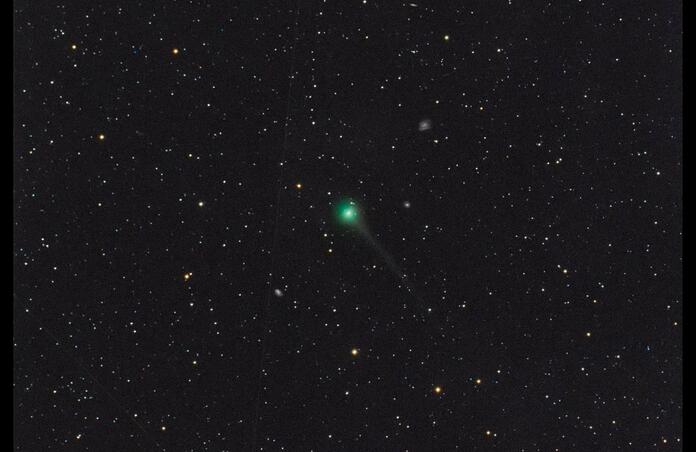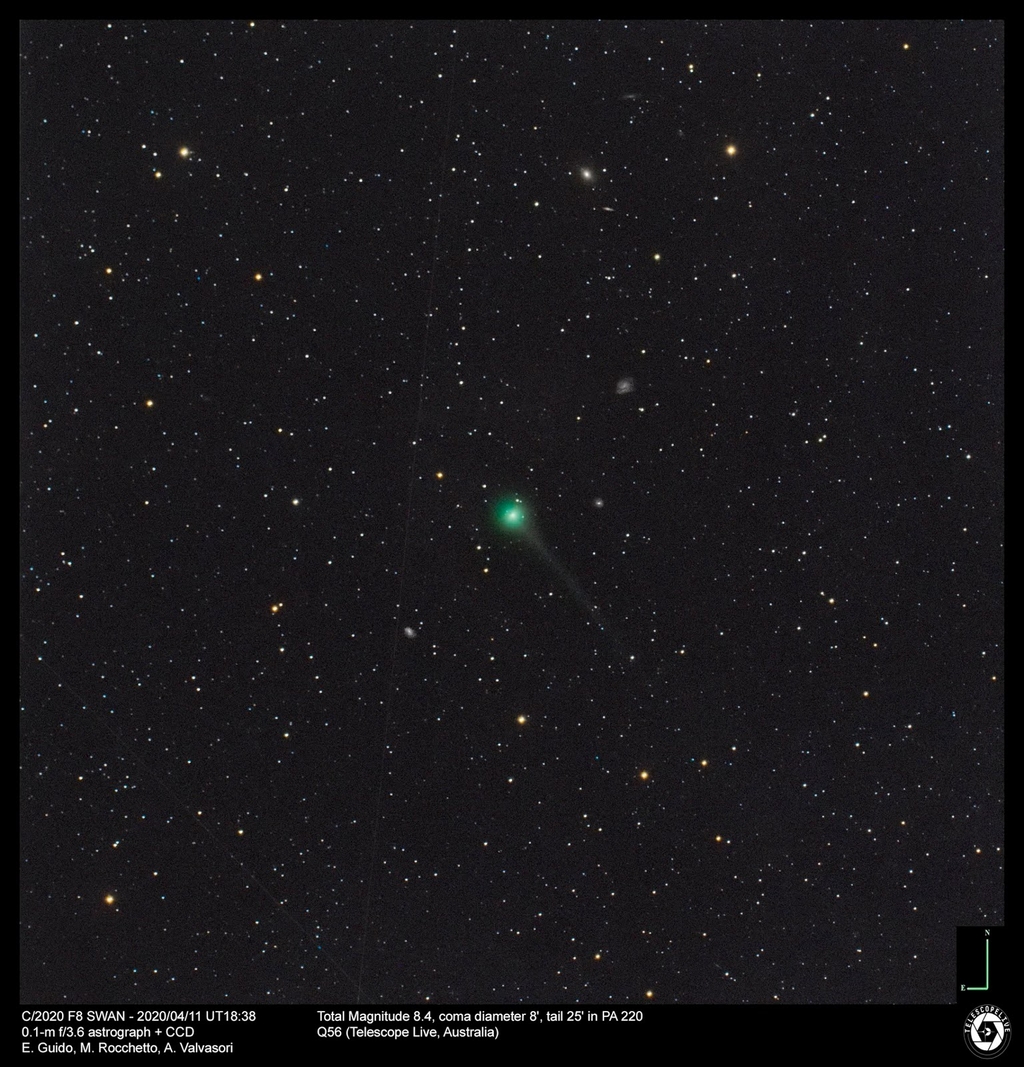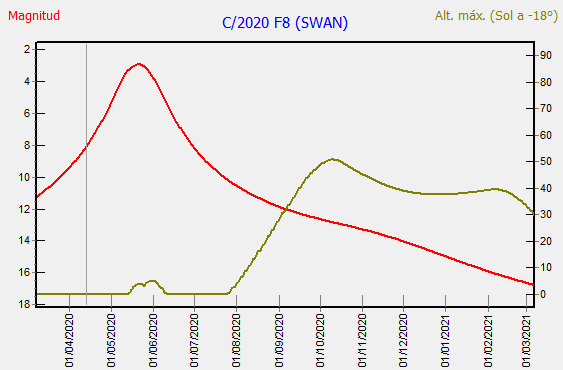New Comet C/2020 F8 (SWAN)

Until a few weeks ago, the hopes of comet observers and astronomy enthusiasts in general around the world were placed on the comet C/2019 Y4 (ATLAS).
Between the end of February and the beginning of March comet ATLAS was brightened toward a glorious peak magnitude to become a naked-eye comet. Unfortunately images taken at the end of March showed clear evidence of the fragmentation of this comet. As a result ATLAS comet started to slowly fading and becoming more diffuse. So, sadly, the initial expectations are meant not to come true.
While comet C/2019 Y4 (ATLAS) continued to slowly fade and losing fragments, a new player entered the field. While looking at images obtained by the Solar Wind Anisotropies (SWAN) camera on the Solar and Heliospheric Observer (SOHO) spacecraft, M. Mattiazzo noted a possible comet and reported it to Central Bureau for Astronomical Telegrams (CBAT) and to the Minor Planet Center (MPC).
The object was posted on the "The Possible Comet Confirmation Page" waiting for other observers to confirm it.
I performed, together with Marco Rocchetto & Adriano Valvasori, follow-up measurements of this object while it was still on the PCCP webpage through the Telescope Live network.
Telescope Live has telescopes placed in different parts of the world and we were able to image this new comet both from Chile (X02 Mpc code) and from Australia (Q56 MPC code)
Stacking of 3 unfiltered exposures, 30 seconds each, obtained remotely on 2020, April 11.4 from X02 (Telescope Live, Chile) through a 0.6-m f/6.5 astrograph + CCD, shows that this object is a comet with a compact coma about 5' in diameter and a tail 6' long in PA 220. Total magnitude 8.4.
Stacking of 3 unfiltered exposures, 120 seconds each, obtained remotely on 2020, April 11.7 from Q56 (Telescope Live, Australia) through a 0.1-m f/3.6 astrograph + CCD, shows that this object is a comet with a compact coma about 8' in diameter and a tail 25' long in PA 220.
CBET 4750 & 4752 & MPEC 2020-G94 circulars, issued on 2020, April 13, announced the official discovery of comet C/2020 F8 (SWAN). The total magnitude at the moment of discovery was about 8.4 as measured on our images.
Below you can see our image taken from Australia:

Preliminar orbit has the comet 0.4 AU from Sun with a peak magnitude at about 3 mag. at the end of May 2020! (as always with comets, the future magnitudes reported here are only indicative). Elongation will start to decrease at the beginning of May 2020 and it will be about 20 degrees at the peak magnitude. This Swan comet will be visible in extremely low sky in late May for Northern Hemisphere with a maximum height of 3-4 degrees from the horizon (with the Sun at -18 degree on the horizon). Then the comet will appear in the morning sky at 11.5 mag in August and it will be observable in good condition after that while fading.

The latest visual magnitude estimates have it at about 5.8 on April 28. Will this comet meet expectations or it will begin its descent before reaching its coveted peak? We'll only find out by observing!
Ernesto Guido
http://remanzacco.blogspot.com
http://twitter.com/comets77
http://app.telescope.live/
